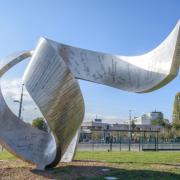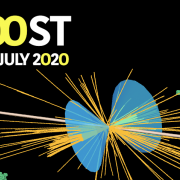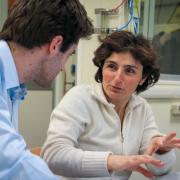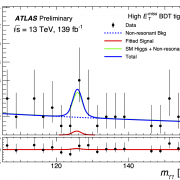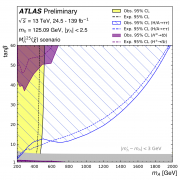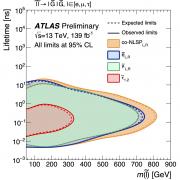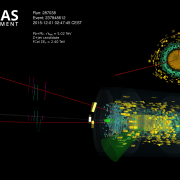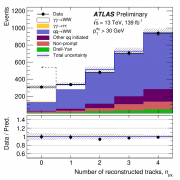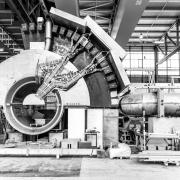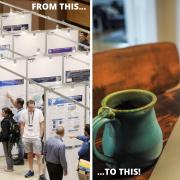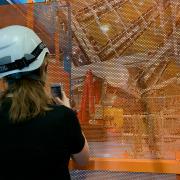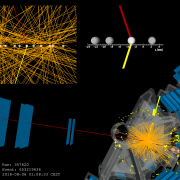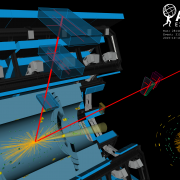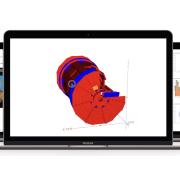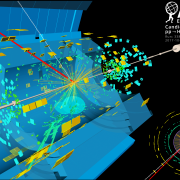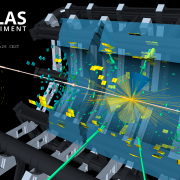Access to Collaboration Site and Physics Results
Updates tagged: “detector”
The pixels system: last but not late!
After almost 15 years of R&D and prototyping, the ATLAS pixel detector is finally almost ready for installation in ATLAS, and its first rendez-vous with colliding beams!
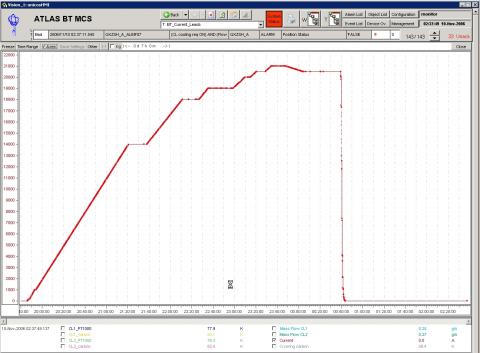
Barrel toroid magnet fully charged to nominal field, and it works!
After a few weeks of testing up to intermediate currents, finally, on Thursday evening November 9, the current in the Barrel Toroid was pushed up to its nominal value of 20500 A and even 500 A beyond this value to prove that we have some margin. It went surprisingly well.
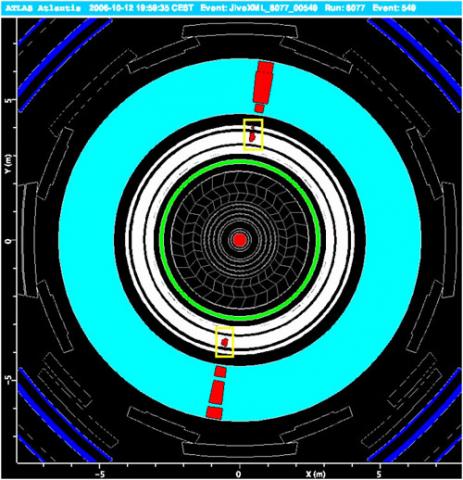
First physics pulses in the barrel electromagnetic calorimeter with cosmic rays
The electromagnetic barrel calorimeter was installed in its final position in October 2005. Since then, the calorimeter is being equipped with front-end electronics. Starting in April 2006, electronics calibration runs are taken a few times per week to debug the electronics and to study the performance in the pit (stability, noise). Today, 10 out of the 32 Front End crates are being read out, amounting to about 35000 channels.
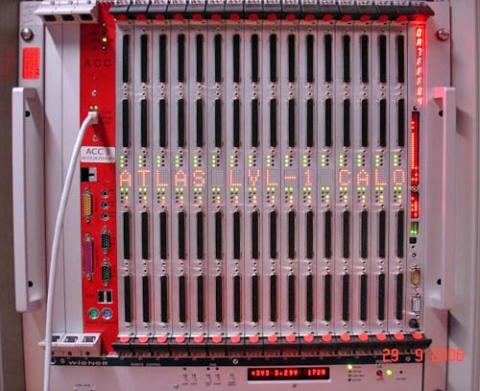
Progress on the level-1 calorimeter trigger
The level-1 calorimeter trigger (L1Calo) has recently passed a number of major hurdles. The various electronic modules that make up the trigger are either in full production or are about to be, and preparations in the ATLAS pit are well advanced.
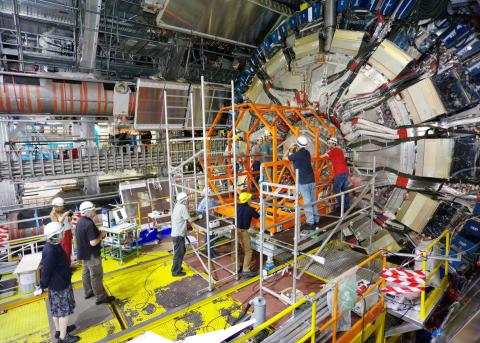
Inner detector barrel installed in cryostat
Wednesday 23rd August was a memorable day for the Inner Detector community as they witnessed the transport and installation of the central part of the inner detector (ID-barrel) into the ATLAS detector.
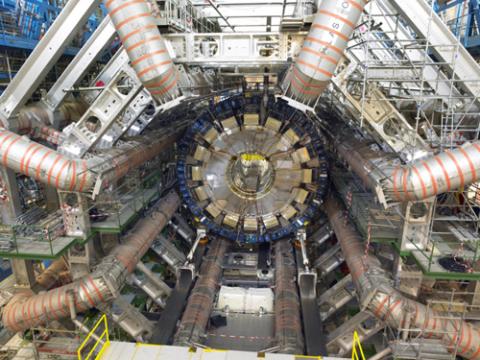
First operation of the central solenoid
A new phase for the ATLAS collaboration started with the first operation of a completed sub-system: the central solenoid. It was cooled down from the 17th to 23th May 2006, and the first kA was put into it the same evening as it was cold and superconductive. That makes our solenoid the very first cold and superconducting magnet to be operated in the LHC underground areas.
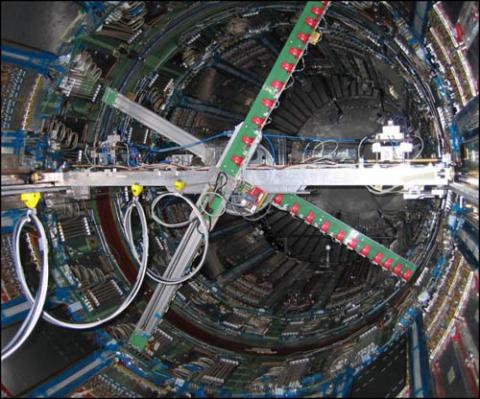
Successful mapping of the solenoid magnet
The ATLAS solenoid coil is about 5.3m long, has a diameter of 2.5m and is designed to deliver a magnetic field of approximately 2T for the ATLAS inner detector. The superconducting solenoid coil has been integrated inside the LAr barrel cryostat and was installed at its final position inside the cavern in November 2005. This summer - after completion of the extended barrel calorimeters and before the installation of the inner detector - the end cap calorimeters (LAr end caps and Tile extended barrels) were moved for the first time into their final position in order to create conditions as close as possible to final for the solenoid tests and for mapping the field inside the solenoid bore.

Progress with the muon end-cap
After completing the preparation of the sectors of the wheels TGC-1 (first layer of trigger chambers) and MDT (precision chambers) for the side C of ATLAS last spring, the work in building 180 has advanced quickly during the summer: all the sectors for TGC-2-C have been completed during the month of August; currently, two sectors for TGC-3-C are complete, and work is underway for three others. Similarly, assembly, integration and commissioning have progressed well also with the precision chambers, with 12 of the 16 sectors for MDT-A being complete now, and the end of this significant phase of work is only a few weeks ahead of us.
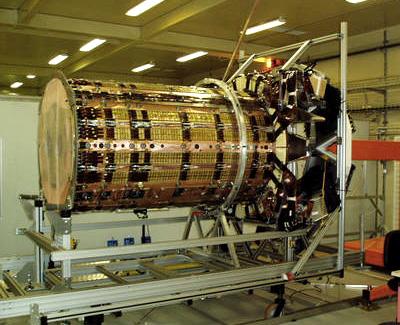
Final components of the semi-conductor tracker (SCT) arrrive at CERN
The first few months of 2006 saw the delivery to CERN of the final components of the ATLAS semi-conductor tracker (SCT), namely the completed SCT end-caps.
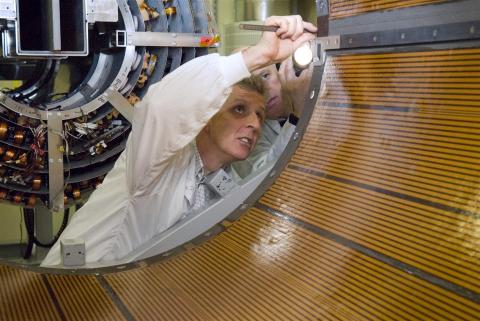
The SCT barrel inserted into the TRT
The SCT barrel was inserted in the TRT on 17 February, just missing Valentine's day. This was a change of emphasis for the two detectors. In the preceeding months there had been a lot of focus on testing their performance. The TRT had been observing cosmic rays through several sectors of the barrel. The two detectors had to be painstakingly aligned to be concentric to within a millimetre.


